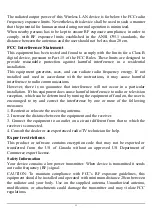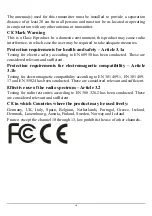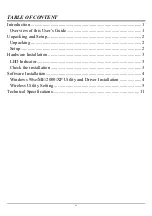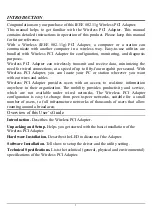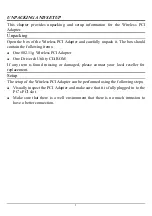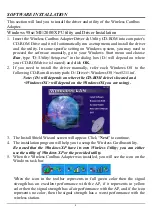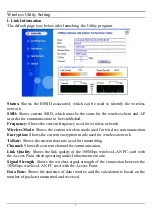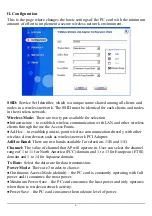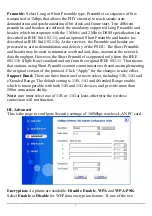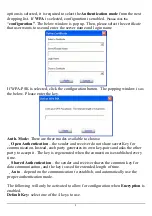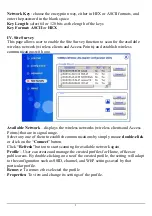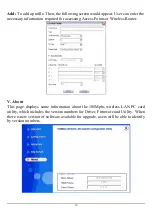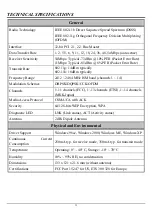
11
TECHNICAL SPECIFICATIONS
General
Radio Technology
IEEE 802.11b Direct Sequence Spread Spectrum (DSSS)
IEEE 802.11g Orthogonal Frequency Division Multiplexing
(OFDM)
Interface
32-bit PCI 2.1, 2.2. Bus Master
Data Transfer Rate
1, 2, 5.5, 6, 9, 11, 12, 18, 24, 36, 48, 54Mbps (auto sense)
Receiver Sensitivity
54Mbps: Typical -73dBm @ 10% PER (Packet Error Rate)
11Mbps: Typical -85dBm @ 8% PER (Packet Error Rate)
Transmit Rate
802.11g: 14dBm typically
802.11b: 18dBm typically
Frequency Range
2412 ~ 2484 MHz ISM band (channels 1 ~ 14)
Modulation Schemes
DBPSK/DQPSK/CCK/OFDM
Channels
1~11 channels (FCC), 1~13 channels (ETSI), 1~14 channels
(MKK-Japan)
Media Access Protocol
CSMA/CA with ACK
Security
64/128-bits WEP Encryption, WPA
Diagnostic LED
LNK (Link status), ACT (Activity status)
Antenna
2 dBi Dipole Antenna
Physical and Environmental
Driver Support
Windows 98se, Windows 2000, Windows ME, Windows XP
Continuous Current
Consumption
250mA typ. for receive mode, 350mA typ. for transmit mode
Temperature Operating:
0
°
~ 40
°
C, Storage: -10
°
~ 70
°
C
Humidity
10% ~ 95% RH, no condensation
Dimensions
133 x 121 x 21.6 mm (without antenna)
Certifications
FCC Part 15.247 for US, ETS 300 328 for Europe,


